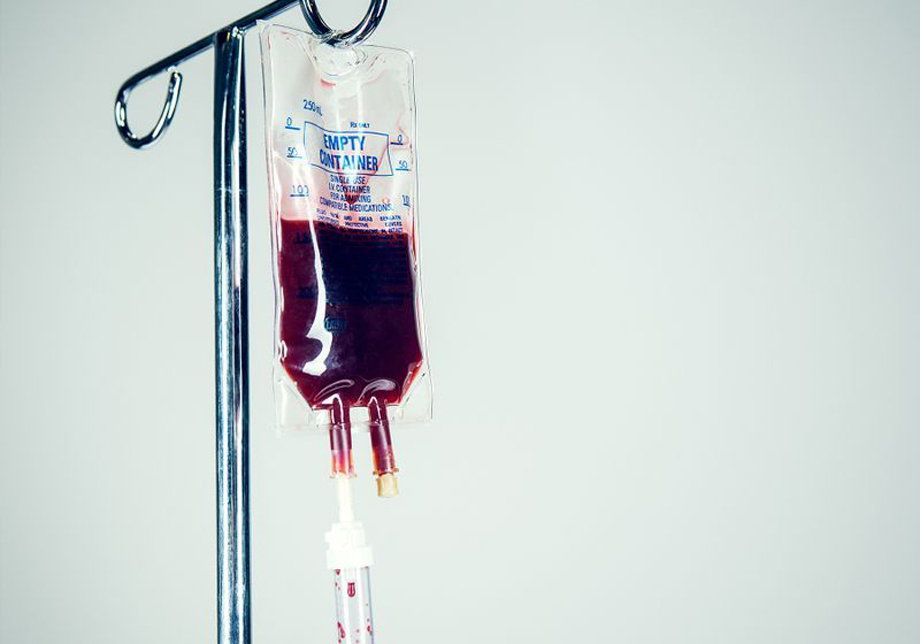Blood – it’s in you to provide. Donating blood is a superb selfless act to assist others. How would possibly it’s good to adapt your coaching round your blood donation schedule?

Introduction
Donating blood is one thing that I’ve been doing routinely for the previous 10 years or so, particularly as I apparently have a comparatively uncommon blood kind: B unfavorable. I believe donating is one thing that’s necessary, as these donations may also help save lives for most cancers, trauma, or burn sufferers.
Nonetheless, donating blood definitely just isn’t as straightforward as writing a test. No, it means giving up your hard-earned pink blood cells. Don’t doping athletes attempt to improve their pink blood cell (RBC) rely or erythropoietin (EPO)? In any case, biking is an cardio sport, so isn’t giving up a few of your cardio health counterintuitive? So, do you have to be donating as an off-the-cuff or aggressive bicycle owner? I hope to assist reply that on this month’s Pez Toolbox article.
What Occurs When You Donate Blood?
An entire-blood donation entails taking one pint (~500 mL) of blood. For many people, this represents about 10% of your complete blood quantity. Which means you’ll be dropping about 10% of your RBCs and the essential oxygen-carrying hemoglobin inside. In idea, this implies forfeiting about 10% of your physique’s capacity to ship oxygen to your working muscle tissues throughout these exhausting intervals. For that reason, the Crimson Cross recommends avoiding strenuous exercise for the primary ~24 hours after donating.
Instantly after donating blood, your physique works exhausting to replenish what was misplaced. Simply 24 hours after donating, your physique can exchange the misplaced plasma (1), or the watery base of your blood. Due to this fact, consuming water earlier than and after donating is so essential.
Your platelets, or the proteins answerable for serving to your blood clot, are replenished after about 72 hours (2).
Sadly for us as athletes, the RBCs, or the oxygen-carriers, are probably the most time-consuming a part of the blood to regenerate, taking roughly 4-6 weeks (2). To assist expedite the replenishment of RBC’s, it is very important embrace meals which are excessive in iron (pink meats, leafy greens, and many others.) into your eating regimen. This 3 to 4 week lag in replenishing RBC’s is what might trigger many athletes to assume twice about donating, however what does the science must say about potential losses in efficiency?

Impression on Efficiency
Unsurprisingly, there are a number of research which have proven diminished cardio efficiency after donating (3-6). The reductions in athletic efficiency have been measured via decreases in VO2max (the utmost quantity of oxygen your physique can course of in a minute) in addition to checks to exhaustion. That can assist you perceive the magnitude of the loss in efficiency, Dellweg & colleagues reported a lower of ~9% in VO2max and ~13% lower in time to exhaustion after donating 500 mL of blood (5). That is comparatively unsurprising after donating roughly 10% of your complete blood quantity.
How lengthy does this impaired efficiency final? Judd & colleagues reported that train efficiency returned inside about 3 weeks (6). Notice that this can be a bit faster than the 4-6 weeks that the Crimson Cross suggests (1).
When do you have to donate?
If you want to think about serving to essential sufferers in want by donating blood, then it’s clearly greatest to keep away from donating within the essential weeks main as much as your essential goal occasions. Actually, I’d not advocate donating ~8 weeks earlier than any deliberate competitors. In fact, that is purely primarily based on efficiency as the only consideration and precedence.
Alternatively, November & early December are nice instances to donate since many people are getting into the low season and could also be decreasing your coaching or switching to comparatively low-intensity coaching. Your plasma quantity and RBC’s will probably be able to go by the point you ramp up your winter coaching.
Conclusion
That’s all for this month! I hope you discovered this text attention-grabbing and related, and that you could be take into account changing into a donor too! Keep secure, journey quick, and I’ll see you all subsequent month!

References
Donation FAQs. (2016). The American Nationwide Crimson Cross. http://www.redcrossblood.org/donating-blood/donation-faqs.
Ruel, J. (2011). Complete blood & platelets: what’s the distinction? Stanford Blood Heart. http://bloodcenter.stanford.edu/weblog/archives/2011/07/whole-blood-pla.html.
Fritsch, J., Winter, U.J., Reupke, I., Gitt, A.Ok., Berge, P.G., & Hilger, H.H. (1993). Impact of a single blood donation on ergo-spirometrically cardiopulmonary efficiency capability of younger wholesome probands. Zeitschrift fur Kardiologie, 82(7). Summary. http://www.ncbi.nlm.nih.gov/pubmed/8379242.
Burnley, M., Roberts, C.L., Thatcher, R., Doust, J.H., & Jones, A.M. (2006). Affect in blood donation on O2 uptake kinetics, peak O2 uptake, and time to exhaustion throughout severe-intensity cycle train in people. Experimental Physiology, 91(3). http://onlinelibrary.wiley.com/doi/10.1113/expphysiol.2005.032805/full.
Dellweg, D., Siemon, Ok., Mahler, F., Appelhans, P., Klauke, M., & Kohler, D. (2008). Cardiopulmonary train testing earlier than and after blood donation. Pneumologie, 62(6), Summary. http://www.ncbi.nlm.nih.gov/pubmed/18535983.
Judd, TB., Cornish, S.M., Barss, T.S., Oroz, I., Chilibeck, P.D. (2011). Time course for restoration of peak cardio energy after blood donation. Journal of Energy & Conditioning Analysis, 25(11). http://journals.lww.com/nsca-jscr/pages/articleviewer.aspx?12 months=2011&difficulty=11000&article=00014&kind=summary.



